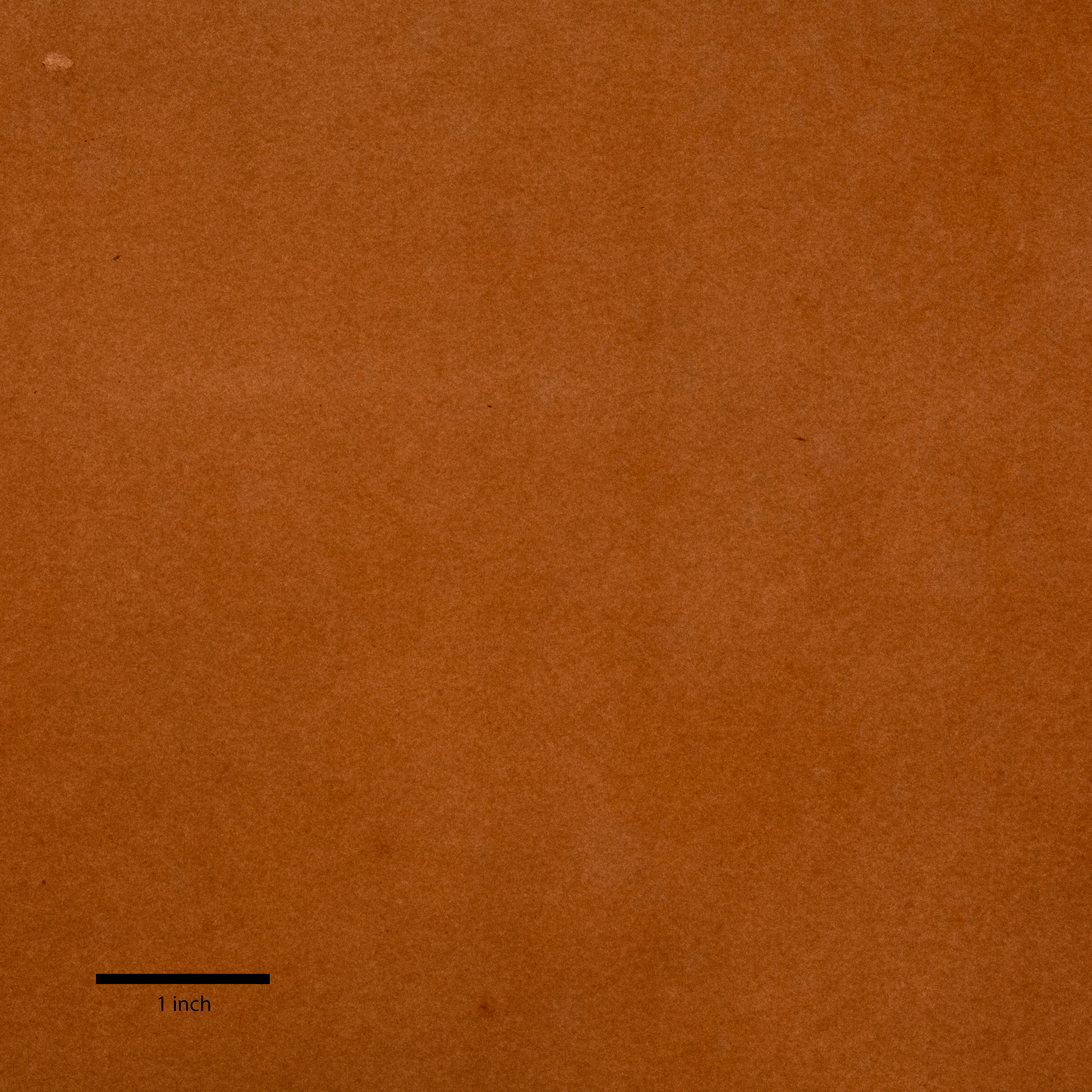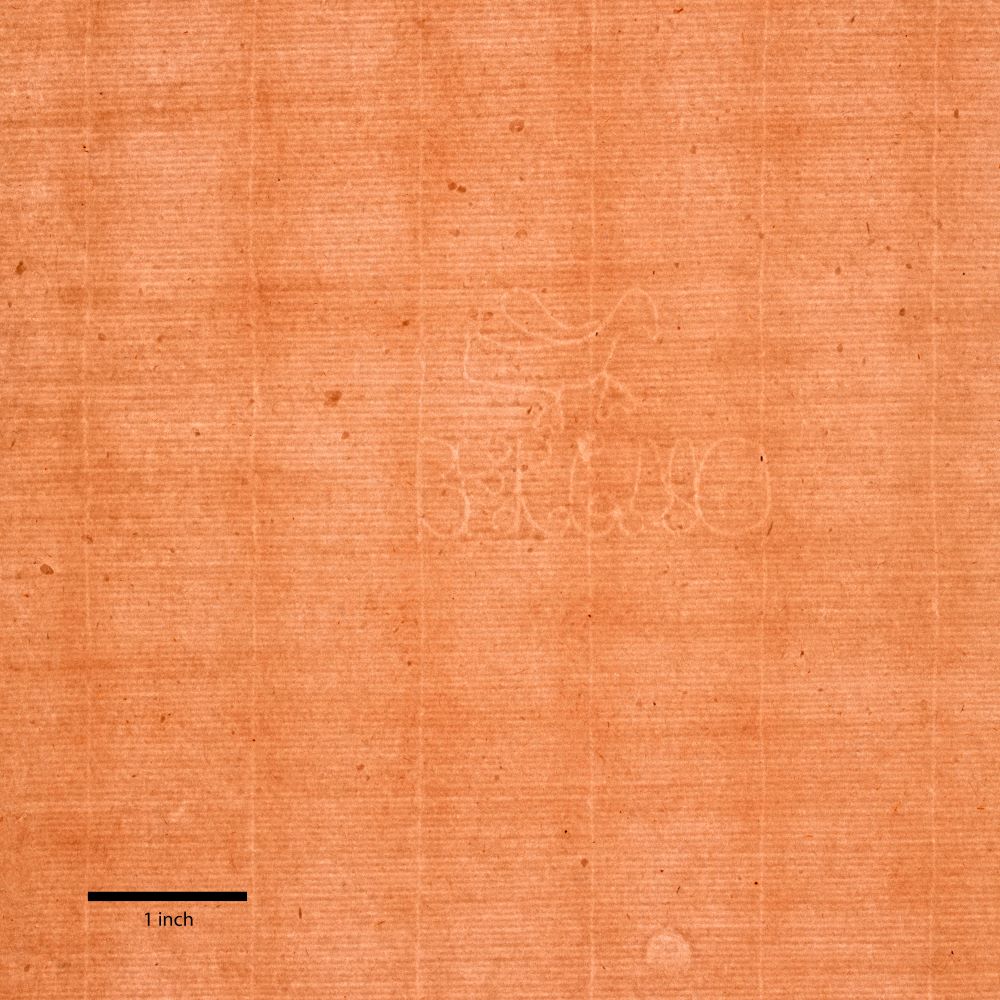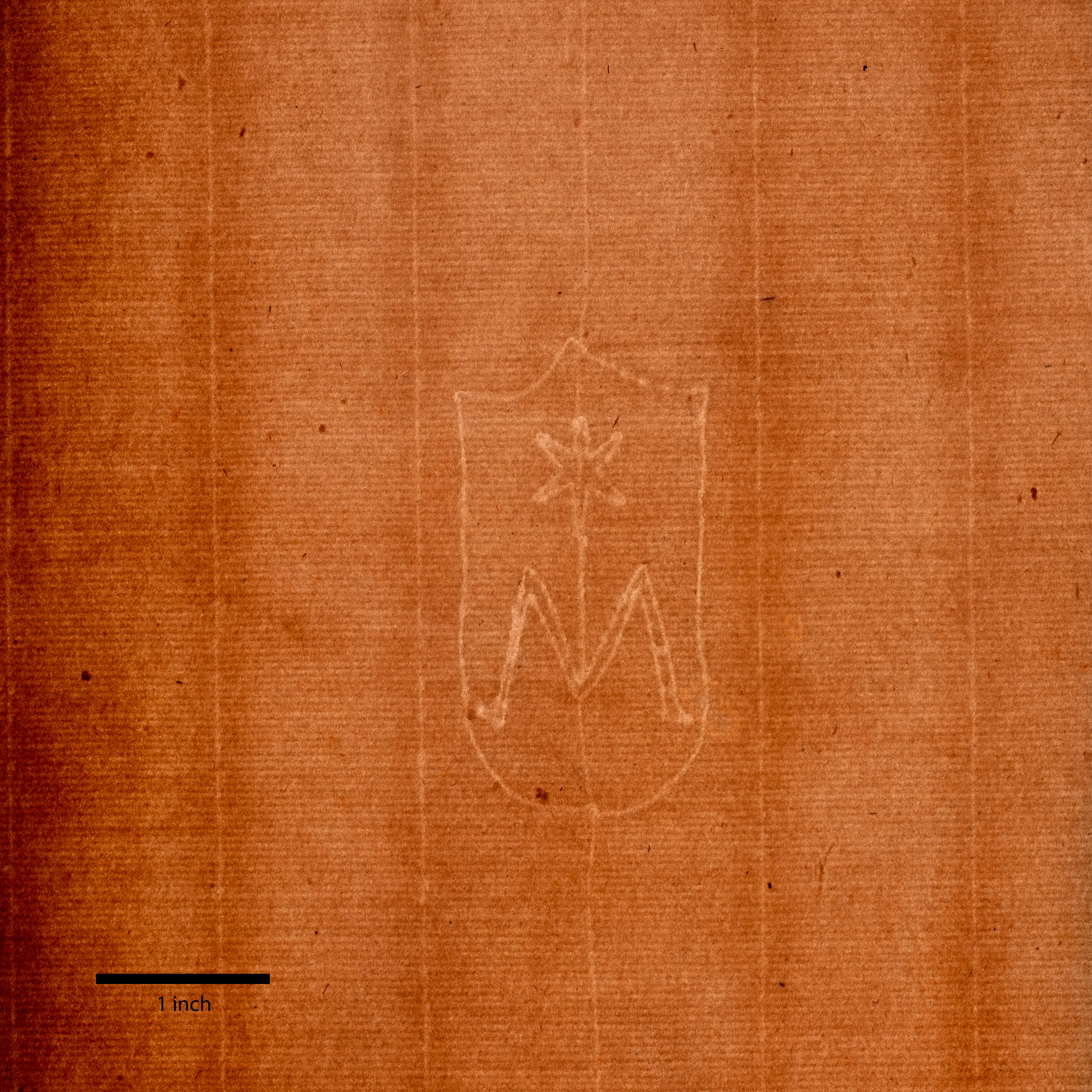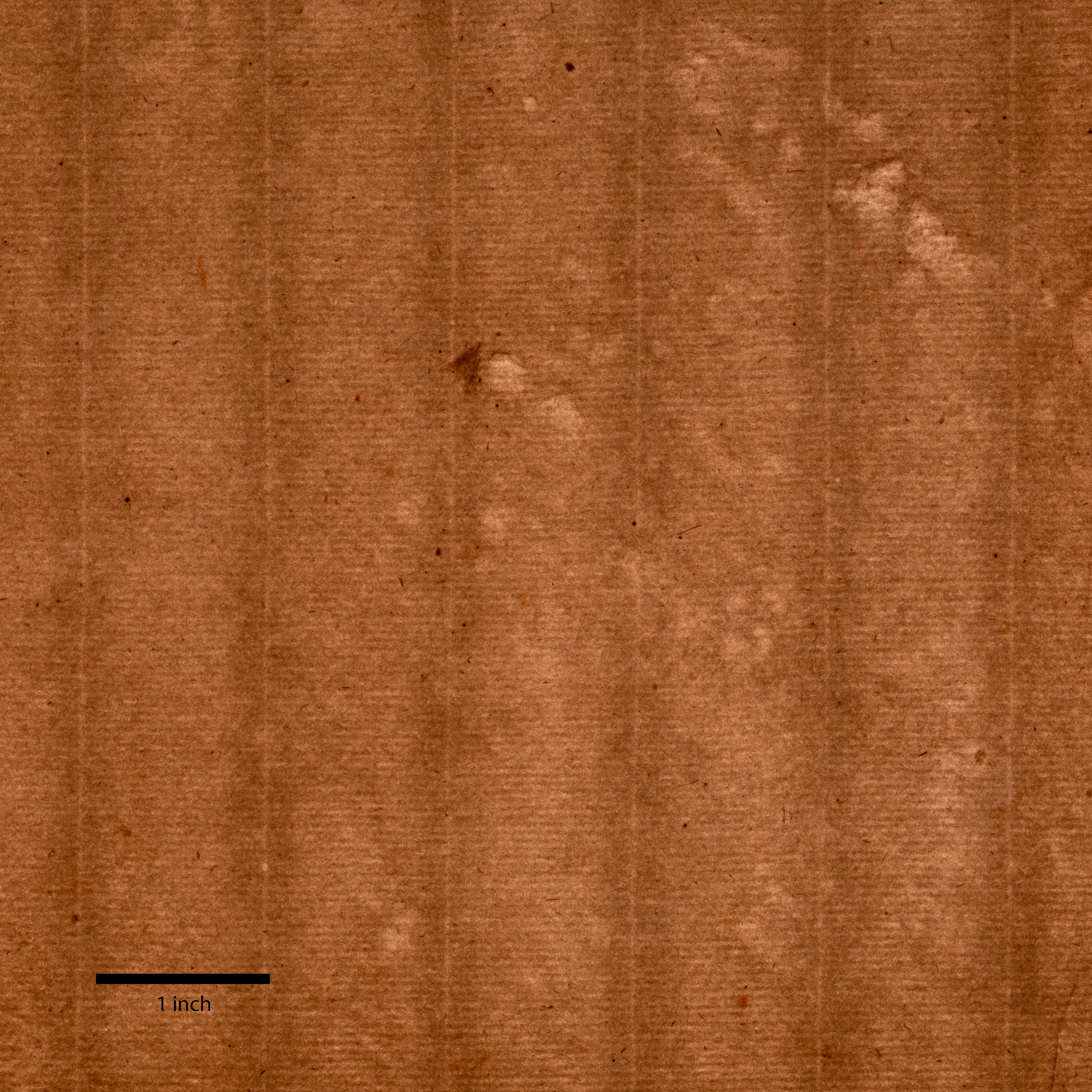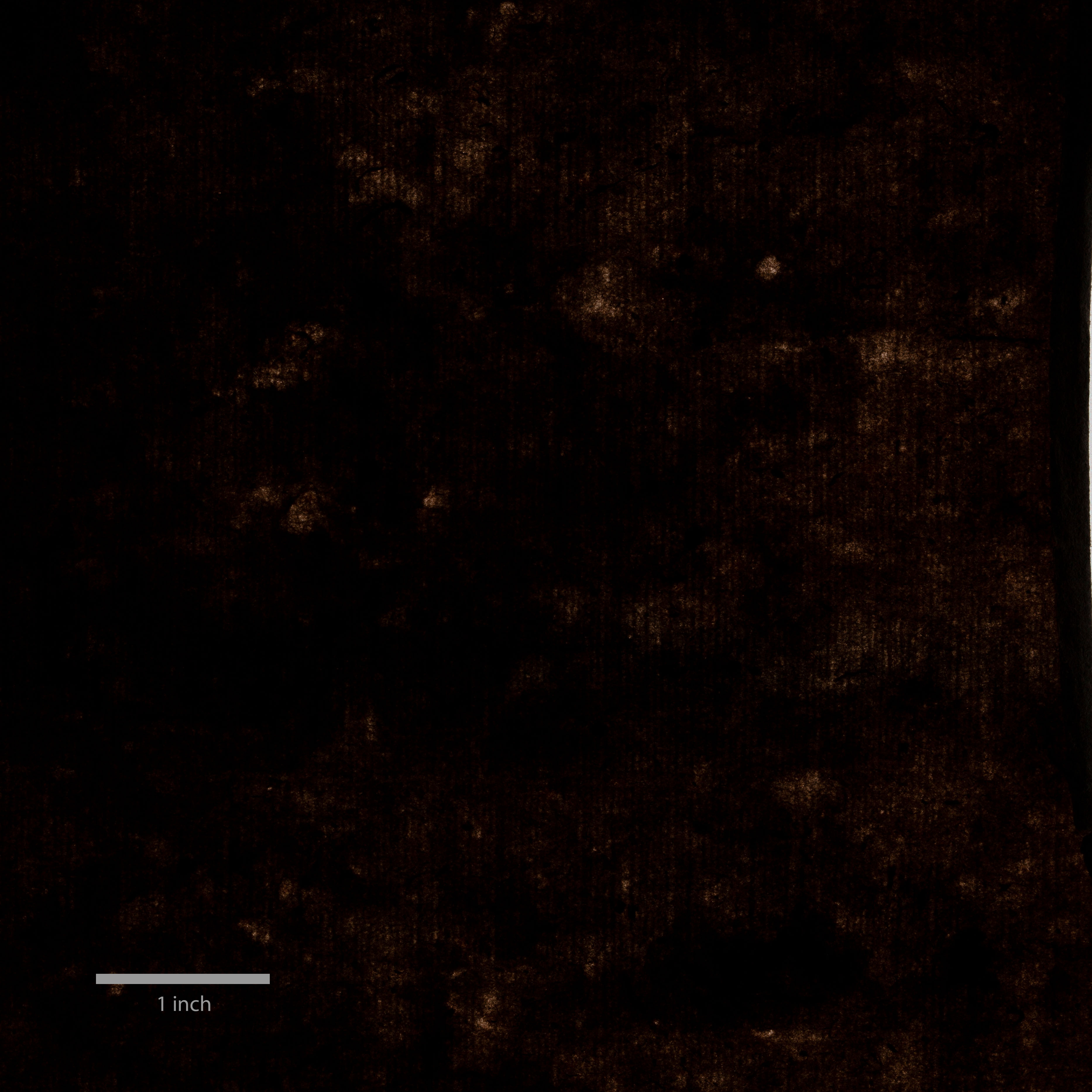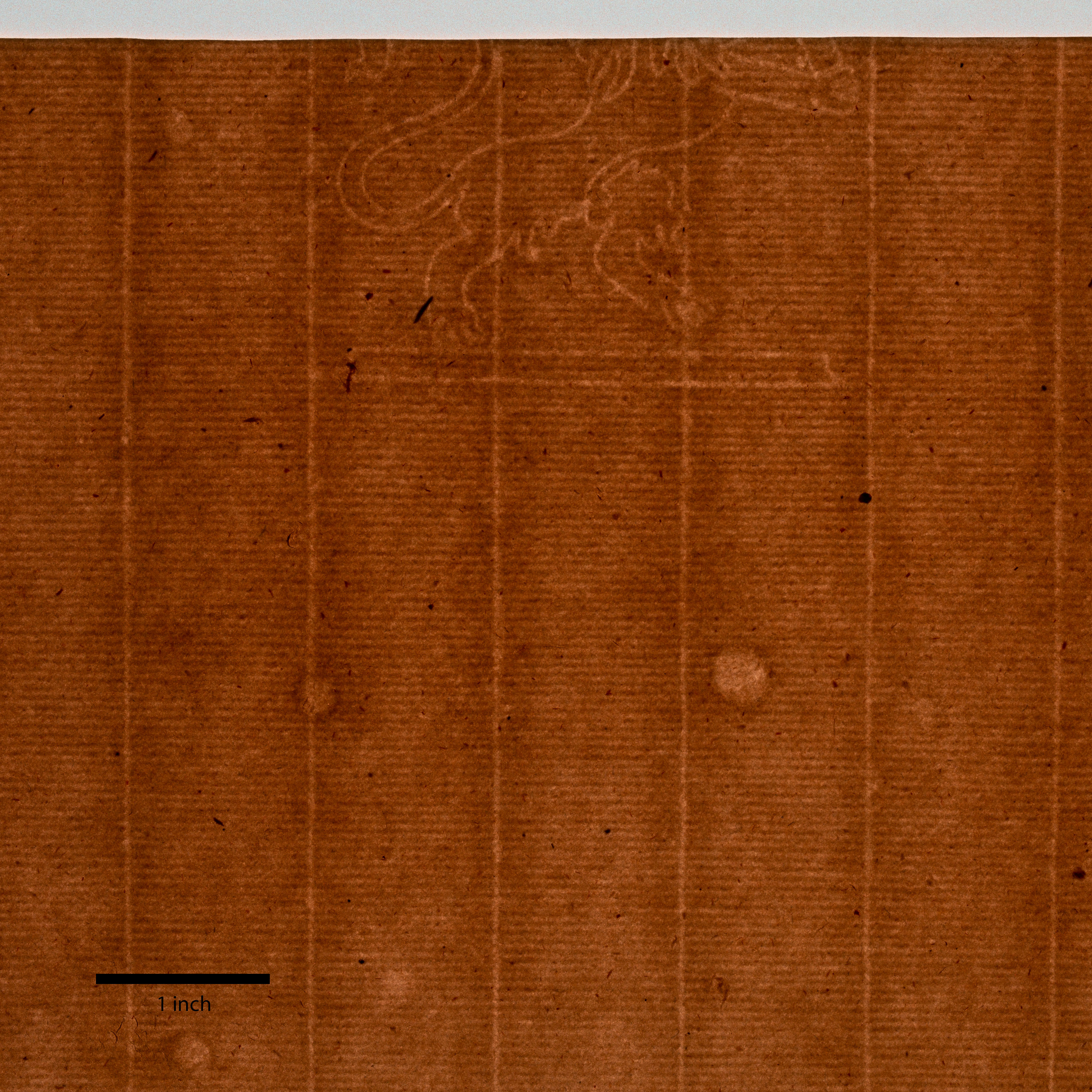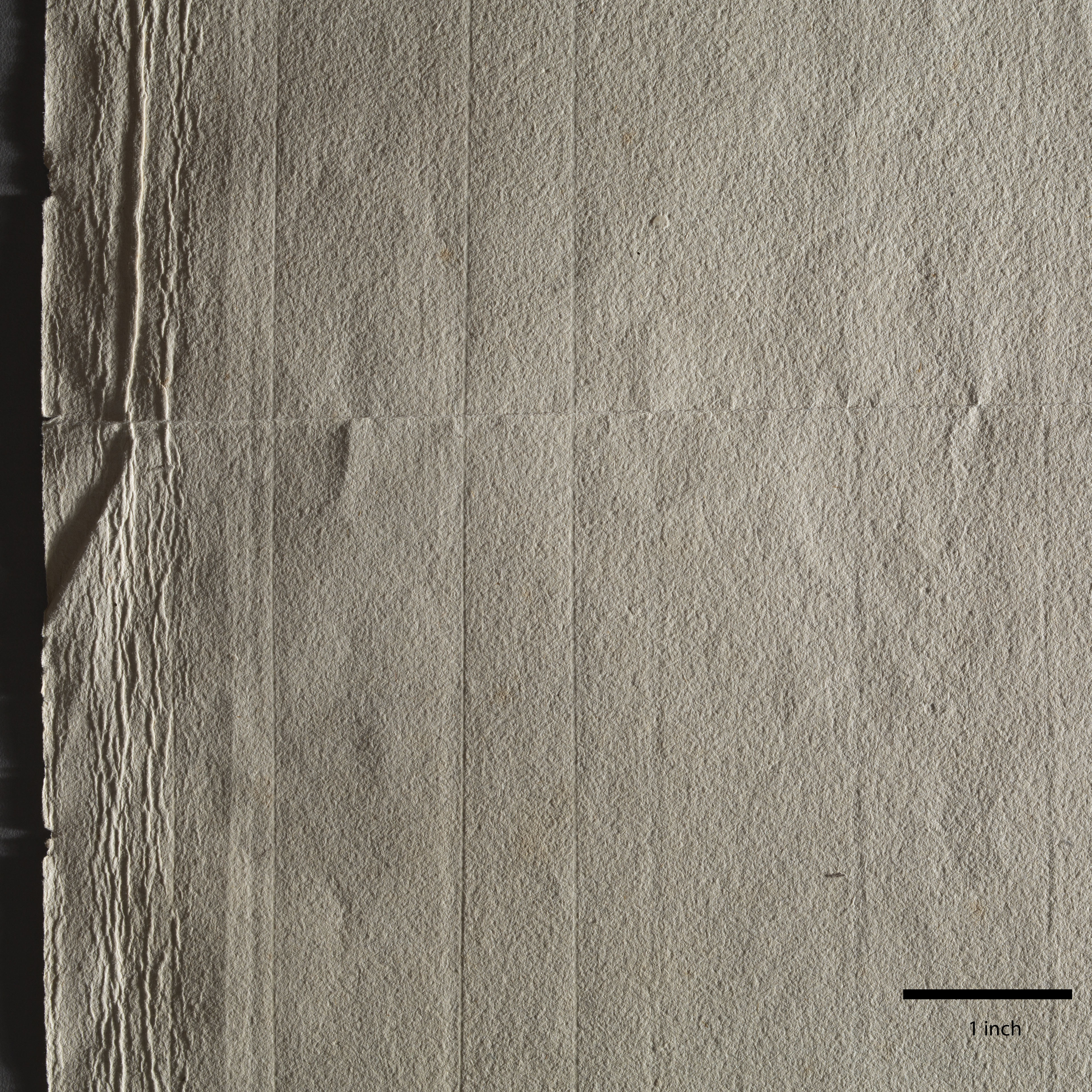There is more to paper than meets the eye. Paper conservation fellow Leonie Müller shares with Index readers the material qualities of paper and how its structures reveal the process of how it’s made.
As a paper conservator, I am fascinated by the structure of paper and how different it can look, feel, and even sound—it can be rough or smooth, glossy or matte; it can have varying shades of white or be colorful; and it can sometimes rustle when carefully handled. These are properties that paper conservators try to describe when looking closely at a work of art on paper, and I invite you to take a closer look with me.
Structures and Process
In Penley Knipe’s article about blue paper making, we learned how paper has traditionally been made. But we can also learn about production processes from paper itself. The properties I described above are the ones we see under normal light, which conservators call visible light. In the Straus Center, we like to use light bulbs that resemble daylight, so the color we perceive is the most natural. But when we tip the lamps at our workbenches a bit or use a handheld flashlight, we create what’s called raking light. In this light, color is not what we are looking for. Suddenly, tiny shadows appear, cast by the uneven surface of the web of cellulose fibers that form the sheet. Also detected are slight indentations from the manufacturing process. For example, raking light can reveal the texture created when felts are pressed against a wet sheet of paper. Raking light lets us perceive paper in three dimensions.



